

Husband Henry Mond
Queer Places:
Slade School of Fine Art, Gower St, Kings Cross, London WC1E 6BT
Mulberry House, 36 Smith Square, Westminster, London SW1P 3HL, UK
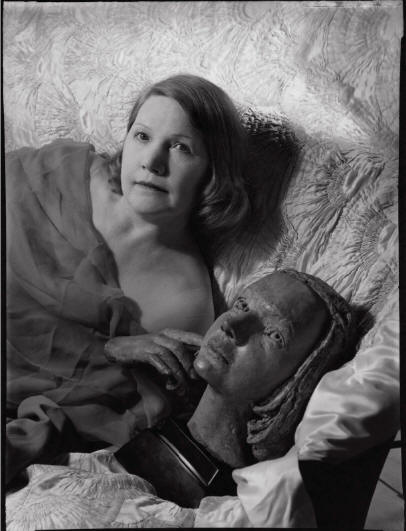 Amy Gwen
Wilson Mond, Lady Melchett (1899-1982), married Henry Mond, 2nd Baron Melchett, a British politician, industrialist and financier.
Gilbert Cannan's marriage ended in 1918
when he had an affair with
Gwen Wilson who later married
Henry Mond in 1920
while Cannan was lecturing in the United States. Unconventionally, Cannan
lived with Wilson and her new husband in a ménage à trois in their home,
Mulberry House, in Smith Square, Westminster.
Amy Gwen
Wilson Mond, Lady Melchett (1899-1982), married Henry Mond, 2nd Baron Melchett, a British politician, industrialist and financier.
Gilbert Cannan's marriage ended in 1918
when he had an affair with
Gwen Wilson who later married
Henry Mond in 1920
while Cannan was lecturing in the United States. Unconventionally, Cannan
lived with Wilson and her new husband in a ménage à trois in their home,
Mulberry House, in Smith Square, Westminster.
Gwen Mond (Lady Melchett) and her husband, Henry Mond (Lord Melchett) were important patrons of the artist and remained faithful to Glyn Philpot during his dramatic shift to a modern style of painting in his last years. In fact, it is believed they may have encouraged that change by commissioning Philpot to add wall decorations of “The Loves of Jupiter,” painted on silver foil, to the critically acclaimed modernist Drawing Room of Mulberry House, their London residence, which was designed by the prominent British architect Sir Edwin Landseer Lutyens (1869-1944). The Monds counted many other artists among their friends, including Edward Seago and Augustus John, and held views similar to the liberated Bloomsbury crowd of artists and writers.
Amy Gwen Wilson, the daughter of a South African businessman, was an aspiring artist who had studied with Henry Tonks and Philip Wilson Steer at the Slade. She met her future husband in typical fashion: One evening in 1917, Henry crashed his motorcycle outside the London artist’s studio Gwen was sharing with her lover, the novelist Gilbert Cannan. She rushed outside to find Mond lying in the road, badly injured. Impetuously, she insisted on taking him inside and nursing him back to health. What Cannan thought of this arrangement is unrecorded. Mond became their lodger and, with Gwen’s solicitous nursing, he recovered. Inevitably, he fell in love with her. They set up a ménage à trois with Cannan that became the subject of much speculative gossip in London literary circles… The ménage à trois with Cannan and Mond persisted for nearly two years. In the autumn of 1919, Cannan went on a lecture tour of the United States to promote the work of his friend D.H. Lawrence. During his extended absence, Mond married Gwen, precipitating Cannan’s final, catastrophic and irreversible mental breakdown.
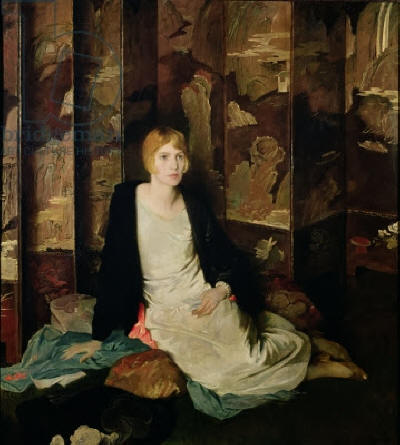
Mrs. Henry Mond, 1927, by Glyn Warren Philpot, Oil on Canvas, 59.5 x 54 in., Private Collection
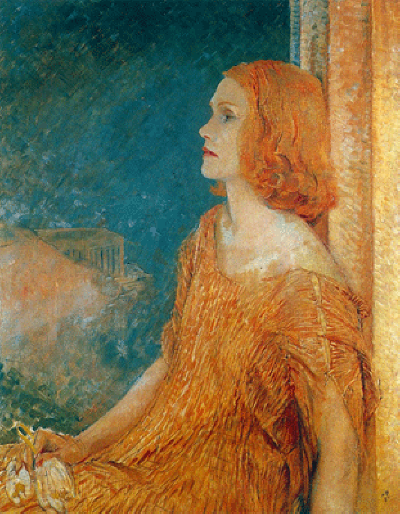
Gwen Mond, Lady Melchett, by Glyn Warren Philpot, Oil on canvas, 89.5 x 71.7 cm. National Gallery of Victoria, Melbourne
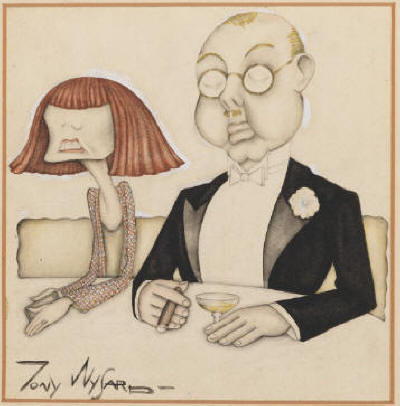
Henry Ludwig Mond, 2nd Baron Melchett; (Amy) Gwen Mond (née Wilson), Lady Melchett
by Anthony Wysard
watercolour, 1929
6 3/4 in. x 6 7/8 in. (173 mm x 176 mm) image size
Purchased, 1990
Reference Collection
NPG D290
,Scandal.png)
Scandal by Charles Sargeant Jagger (1885- 1934), 1930. Patinated bronze, 149 x 161.4 cm. The Victoria and Albert Museum, London
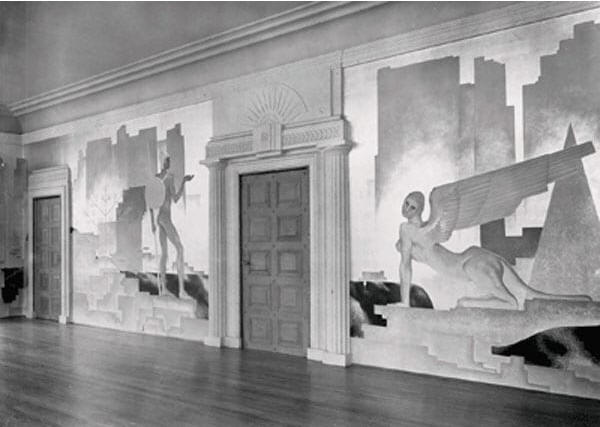
A photograph of the drawing room at Mulberry House in 1931 (Country Life)
Mulberry House, 36 Smith Square
Gwen Wilson and Henry Mond were married Jan. 30, 1920 when he was 22 and she was a 21-year-old “show-stopping beauty,” everyone seemed to agree. They had two sons and one daughter. In 1930 they commissioned Philpot to create murals for the art-deco drawing room of Mulberry House, which had as its centerpiece, Charles Sargeant Jagger’s relief “Scandal,” now on view at the Victoria & Albert Museum. Eric Turner relates that the relief was commissioned as “a satirical reference to their early ménage à trois.” The relief depicted a “guilty couple standing naked before outraged onlookers who peer at them with hands raised in horror” whilst the firebasket features “two snarling cats hiding behind female masks… signifying the ‘double-face’ and ‘cattiness’ of society gossip”.
Subsequently removed from the property when Lady Melchett moved to Belgrave Square, the relief and firebasket were bought by the Victoria & Albert Museum in 2009 for £85,000 and are now displayed in the Dorothy and Michael Hintze Sculpture Galleries. Mulberry House, meanwhile, like many grand houses of that era, subsequently became offices but reverted to residential usage in 2006 after a full-scale renovation.
My published books: